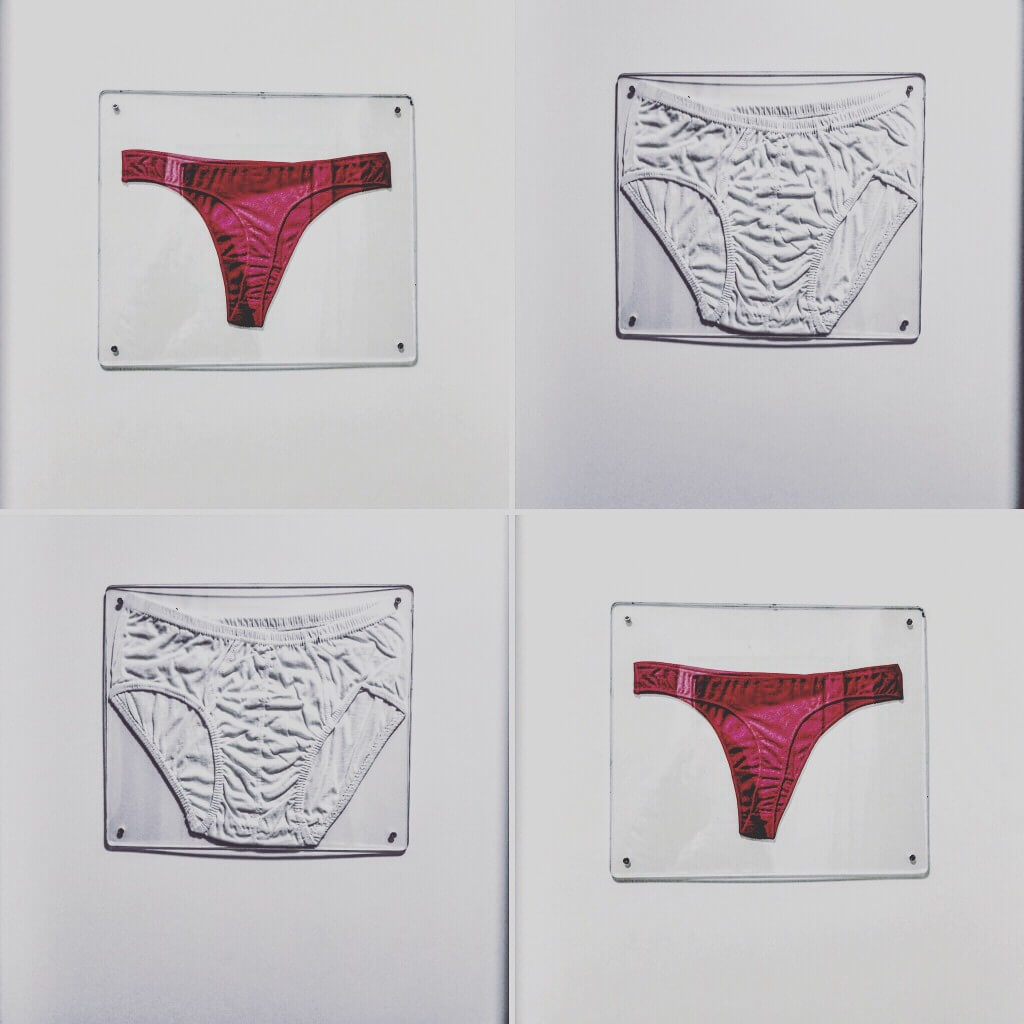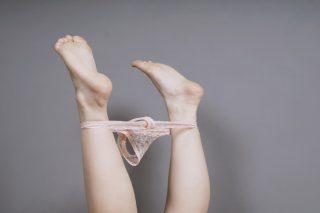Have you ever stopped to think why we talk about “a pair of underwear”? Or a pair of briefs, or knickers, as the case may be?
Its one of those questions that blind adherents to the rules of English may not think about at first, or ever, unless it occurs to them out of the blue or someone mentions it to them.
Once the question arises, though, it’s a conundrum that begs to be answered. We have to travel back in time to the history of underwear to find out the possible reasons.
The First Question – Why Do We Talk about a Pair of Trousers or Pants?
Before we get to underwear, let’s consider expressions that described clothing for the lower part of human bodies. The term “pants” was first used in 1840 by Edgar Allen Poe.
Notice the plural. Some suggest that we have a pair of legs and pants (or underwear in a related context) cover them. But this is not likely the reason why they are referred to in the plural.
Where Did Pants Come From?
The word pants came from “pantaloons”, referring to a tight-fitting style of garments that became popular in France and eventually England as a replacement for knee breeches – the French called this garment the “pantalon”, which became pantaloons in English.
The French had associated “pantalon” as the garment worn by a typical Venetian – think Shylock a la Shakespeare, wealthy but miserly – merchant. Venetians were called the Pantaloni after their patron saint, Saint Pantaleon, from back in the 4th Century. Their garments came to be known as “pantalones” in 17th century France, based on a character named as Pantalone in an Italian comedy that had gained popularity.
Around the time Poe was writing, a pair of pants had come to signify long drawers covering the whole leg(s), while trousers referred to outer garments worn on top of them. Even though there was initial resistance to the short form of the word, “pants” ultimately stuck as a name.
Why a Pair, though?
Referring to pantaloons, and then pants or trousers, as a collective – aka “a pair of pants” – was due to the styles that were prevalent during the 17th and 18th-century forms of those garments, In those days, it was customary to have two separate leg pieces that one put on, then tied each around the waist.
So it was literally the case that there used to a two separate pieces to a pair of pants. This lasted into the 19th century, when pants began to be manufactured as a single piece of clothing.
What about Briefs, Shorts, or Knickers?
The reason why we refer to “a pair of underwear” followed the same logic as the pants or trousers, based on the way the garments evolved. Let’s follow the history.
Use of Underwear Pre-19th Century
Many ancient cultures, including the Egyptians and Vedic Hindus, wore loincloths as underwear. The Romans, male and female, wore a version of shorts or loincloths called subligaculum. The women wore an additional piece of leather undergarment - strophium - around their upper body.
For most of the Middle Ages, European women did not wear shorts or knickers. Instead, they wore a single shift which covered their body much like a modern nightgown does. Men did wear linen shorts on occasion – which, as we saw before, evolved into pants or drawers.
Evolution of Underwear Styles, and Names, from the 19th Century Onwards
The real evolution of different forms of underwear began in 19th Century Europe and America. The different names for underwear also evolved at this time:
- The word “drawer” was used since underpants were literally drawn on.
- We discussed above how “pants” evolved from Pantalones and then Pantaloons – the American word “panty” was a derivative of pants.
- Knickerbocker had an interesting origin. Washington Irving wrote a novel called the History of New York adopting a penname. The novel was published under the name of a fictitious Dutchman living in New York (the former Dutch colony of New Amsterdam). The name chosen, Diedrich Knickerbocker, was depicted as a real character on the covers of the books printed on either side of the Atlantic. His style of long, loose-fitting undergarments came to be called knickerbockers – first for men, who adopted that style of clothing when playing sports, and eventually women as well.
- Upper garments worn by women in Victorian England evolved to be known as “vests”. The men sometimes began to wear a single piece upper and lower garment, which consisted of pants and a vest.
- Another variation, popularized and promoted by Amanda Bloomer in 1849, were puffed up or roomy undergarments that had been invented by Elizabeth Miller. They came to be known as “bloomers”.
The use of the expression “a pair of … <pants, drawers, knickers, bloomers, panties et al>” persisted due to a specific design characteristic when these different styles of undergarments were coming in vogue.
The Characteristic “Pair” That Persisted for a While
Underwear, be they called drawers, pantaloons, pants, panties or knickers, had one common characteristic for a long time. They were two separate pieces of garments, “drawn on” one leg at a time, each tied at the waist till the ensemble was completed.
This arrangement, more than anything else, created the expression “a pair of underwear”.
There were other traditions around this design, some a little risqué. To start with, imagine the cancan dancers from the French cabarets in the 1840s – which was the period when the dance, along with its distinctive high leg kick – became popularized. Now imagine the divided pair of pants. Though perhaps there wasn’t much left to the imagination.
Talking of Paris, there were a class of women who traditionally performed in a manner that the more sedate people in England and the States found “bold”, to put it mildly.
Some have said that the crotchless panty design originated as a continuation of the exhibitionism that occurred more naturally at a time when pants or drawers were literally a “pair”, as opposed to a single piece of clothing joined at the crotch and all the way around.
The Joining
A number of innovations changed underwear in the 20th century.
Mary Phelps Jacobs used two handkerchiefs, joined by a ribbon, to create the modern bra.
The bottom underwear came to be joined at the crotch and hip, becoming “closed” as opposed to a true pair with an opening.
Then, from the 1930’s to the 1970’s and beyond the length of the drawer kept getting shorter and shorter, first to the knee, then to the upper thighs – and finally to the various forms we find them to be now.
That's Why It's Called a Pair of Underwear
The expression “a pair of underwear” has been handed down through the ages due to how undergarments covering our bottom halves used to look like – two separate pieces tied at the waist.
These days, it can present a dichotomy, given that a single piece of clothing covers our right and left sides. But there’s no point in fretting too much about this, language is a funny thing and traditions can persist beyond the point when they can be taken literally.
Resources
- https://www.sandiegoreader.com/news/2011/may/11/straight-email-volume-pair-pants/
- https://www.quora.com/How-come-they-call-it-a-pair-of-underwear-when-its-only-one-item
- https://www.reddit.com/r/NoStupidQuestions/comments/9nedgj/why_is_it_called_a_pair_of_underwear/
- http://www.localhistories.org/knickers.html
- https://www.grammarphobia.com/blog/2008/12/a-singular-undergarment.html
- https://boards.straightdope.com/t/why-is-underwear-called-a-pair-when-its-just-one-item/600451





